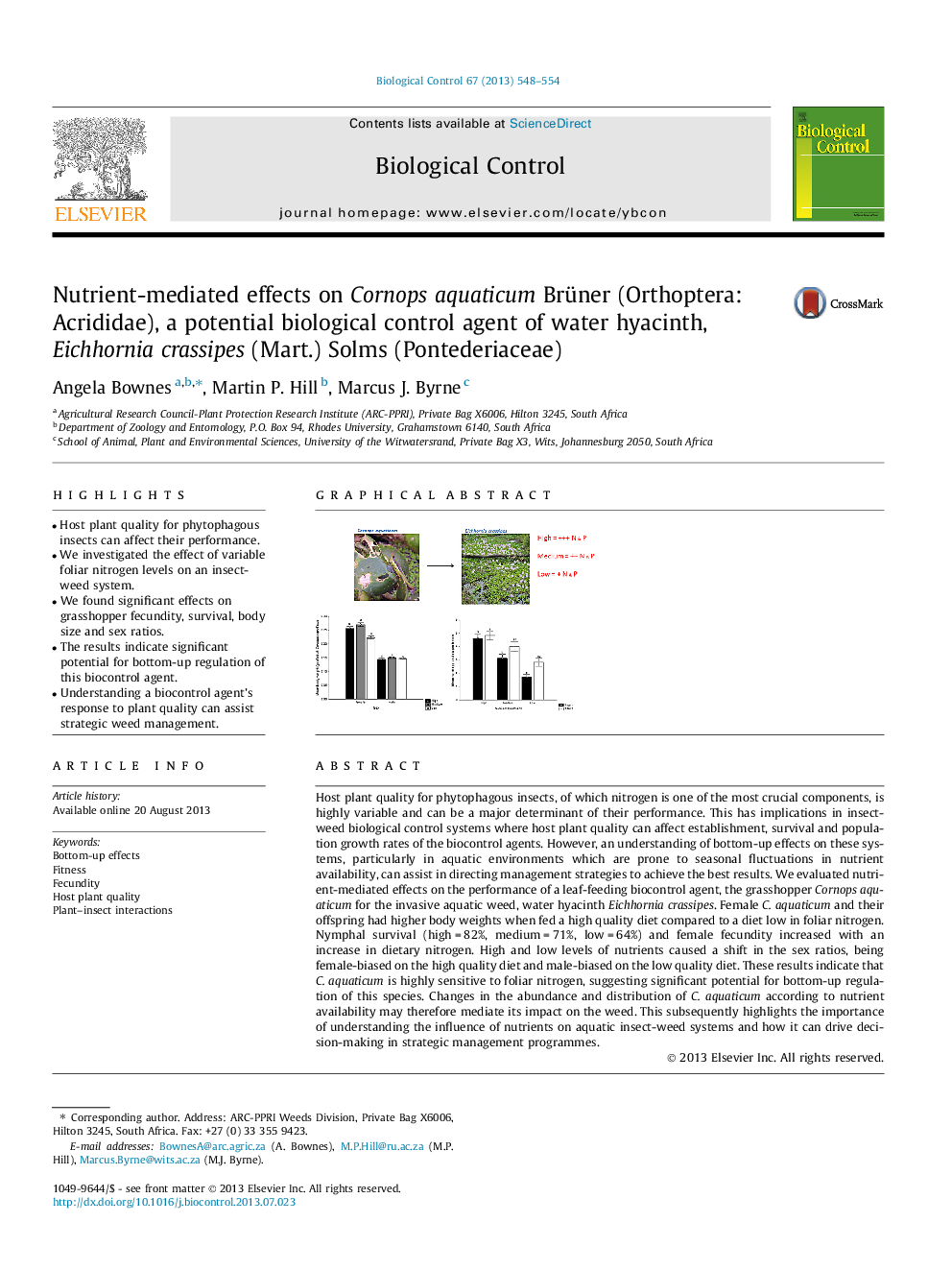| کد مقاله | کد نشریه | سال انتشار | مقاله انگلیسی | نسخه تمام متن |
|---|---|---|---|---|
| 6372715 | 1321049 | 2013 | 7 صفحه PDF | دانلود رایگان |

- Host plant quality for phytophagous insects can affect their performance.
- We investigated the effect of variable foliar nitrogen levels on an insect-weed system.
- We found significant effects on grasshopper fecundity, survival, body size and sex ratios.
- The results indicate significant potential for bottom-up regulation of this biocontrol agent.
- Understanding a biocontrol agent's response to plant quality can assist strategic weed management.
Host plant quality for phytophagous insects, of which nitrogen is one of the most crucial components, is highly variable and can be a major determinant of their performance. This has implications in insect-weed biological control systems where host plant quality can affect establishment, survival and population growth rates of the biocontrol agents. However, an understanding of bottom-up effects on these systems, particularly in aquatic environments which are prone to seasonal fluctuations in nutrient availability, can assist in directing management strategies to achieve the best results. We evaluated nutrient-mediated effects on the performance of a leaf-feeding biocontrol agent, the grasshopper Cornops aquaticum for the invasive aquatic weed, water hyacinth Eichhornia crassipes. Female C. aquaticum and their offspring had higher body weights when fed a high quality diet compared to a diet low in foliar nitrogen. Nymphal survival (high = 82%, medium = 71%, low = 64%) and female fecundity increased with an increase in dietary nitrogen. High and low levels of nutrients caused a shift in the sex ratios, being female-biased on the high quality diet and male-biased on the low quality diet. These results indicate that C. aquaticum is highly sensitive to foliar nitrogen, suggesting significant potential for bottom-up regulation of this species. Changes in the abundance and distribution of C. aquaticum according to nutrient availability may therefore mediate its impact on the weed. This subsequently highlights the importance of understanding the influence of nutrients on aquatic insect-weed systems and how it can drive decision-making in strategic management programmes.
Journal: Biological Control - Volume 67, Issue 3, December 2013, Pages 548-554